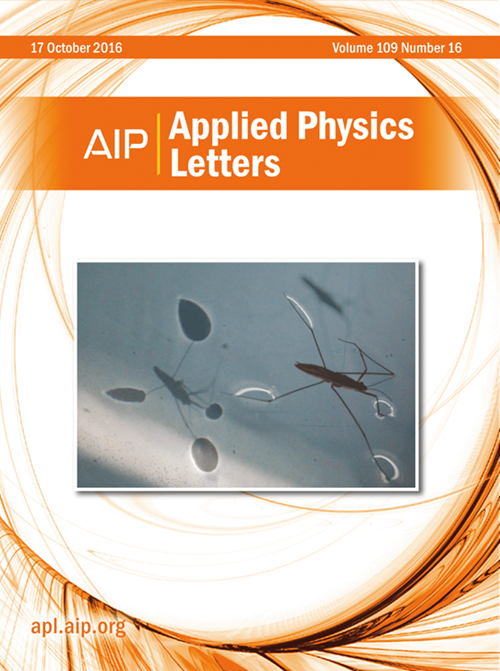Enhanced p-type GaN Ohmic contacts through strategic metal schemes and annealing
IF 3.5
2区 物理与天体物理
Q2 PHYSICS, APPLIED
引用次数: 0
Abstract
To enhance the efficiency and performance of p-type GaN-based power devices (diode, MOSFET) and p-channel transistors (p-FET), forming an Ohmic contact with low specific contact resistance (ρc) at p-GaN can be an effective way. However, the specific contact resistance values of p-GaN remain limited to the range of mid-10−2Ω cm2 due to the low activation ratio of Mg dopants and high work function. Here, we propose an Ohmic contact method using a Pd-based metal stack to achieve lower specific contact resistance compared to conventional p-GaN contact metals such as Ni/Au or Pt/Au. A low specific contact resistance of 1.08 × 10−5Ω cm2 was demonstrated for p-GaN by annealing a Pd-based tri-layer metal contact in an oxygen-rich ambient with an optimized Pd thickness. The mechanism driving this low specific contact resistance was investigated using secondary ion mass spectroscopy, transmission electron microscopy, x-ray diffraction, and x-ray photoelectron spectroscopy, which indicated the mutual diffusion of Ni, Pd, and Ga atoms within the metal alloy. A NiO layer was formed on the top of the metal alloy, and Pd-Ga compounds were formed at the metal/p-GaN interface through mutual diffusion of atoms. This process increased the number of Ga vacancies in p-GaN, playing a crucial role in reducing its contact resistance.求助全文
约1分钟内获得全文
求助全文
来源期刊

Applied Physics Letters
物理-物理:应用
CiteScore
6.40
自引率
10.00%
发文量
1821
审稿时长
1.6 months
期刊介绍:
Applied Physics Letters (APL) features concise, up-to-date reports on significant new findings in applied physics. Emphasizing rapid dissemination of key data and new physical insights, APL offers prompt publication of new experimental and theoretical papers reporting applications of physics phenomena to all branches of science, engineering, and modern technology.
In addition to regular articles, the journal also publishes invited Fast Track, Perspectives, and in-depth Editorials which report on cutting-edge areas in applied physics.
APL Perspectives are forward-looking invited letters which highlight recent developments or discoveries. Emphasis is placed on very recent developments, potentially disruptive technologies, open questions and possible solutions. They also include a mini-roadmap detailing where the community should direct efforts in order for the phenomena to be viable for application and the challenges associated with meeting that performance threshold. Perspectives are characterized by personal viewpoints and opinions of recognized experts in the field.
Fast Track articles are invited original research articles that report results that are particularly novel and important or provide a significant advancement in an emerging field. Because of the urgency and scientific importance of the work, the peer review process is accelerated. If, during the review process, it becomes apparent that the paper does not meet the Fast Track criterion, it is returned to a normal track.
 求助内容:
求助内容: 应助结果提醒方式:
应助结果提醒方式:


